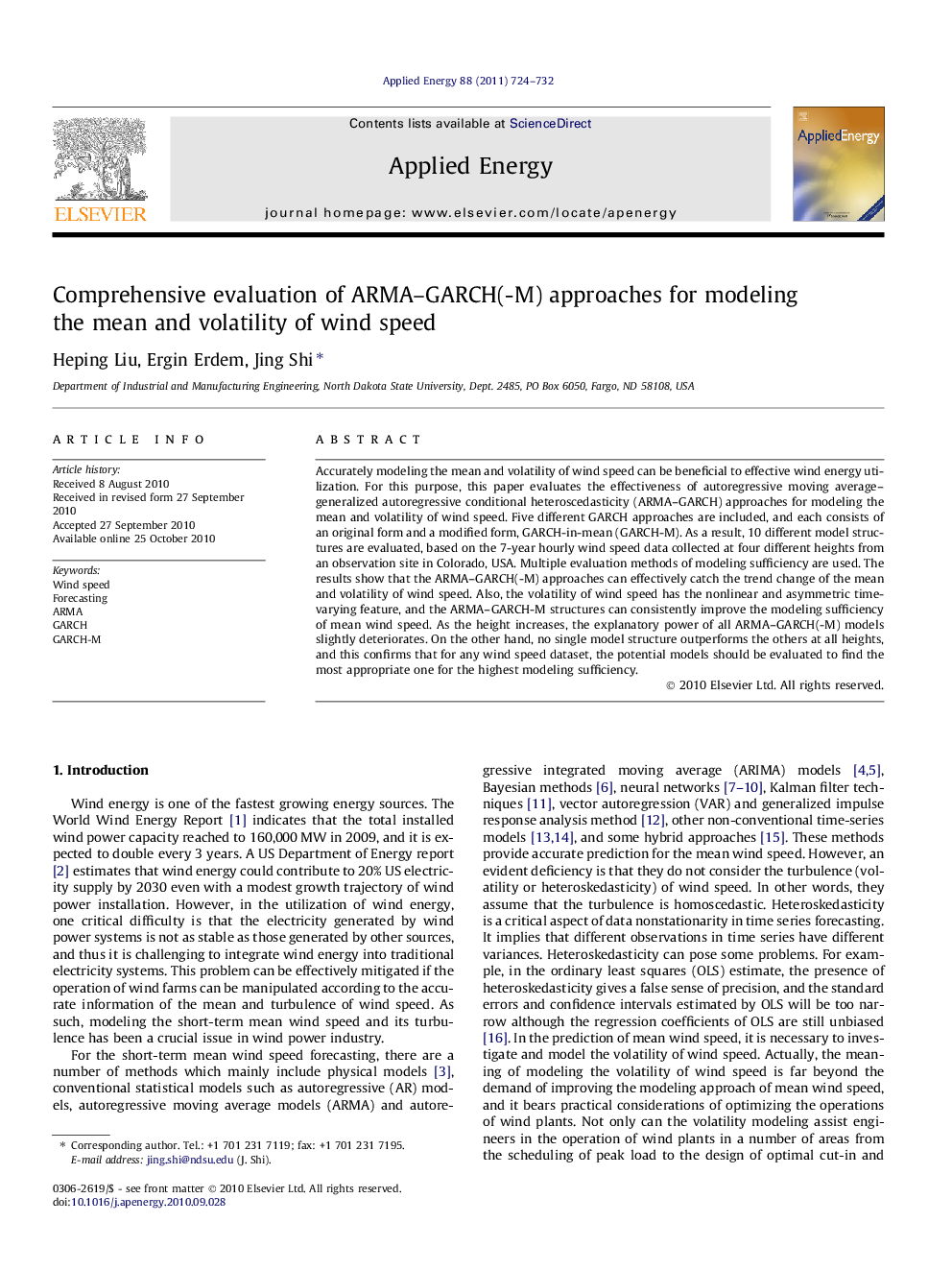| Article ID | Journal | Published Year | Pages | File Type |
|---|---|---|---|---|
| 244099 | Applied Energy | 2011 | 9 Pages |
Accurately modeling the mean and volatility of wind speed can be beneficial to effective wind energy utilization. For this purpose, this paper evaluates the effectiveness of autoregressive moving average–generalized autoregressive conditional heteroscedasticity (ARMA–GARCH) approaches for modeling the mean and volatility of wind speed. Five different GARCH approaches are included, and each consists of an original form and a modified form, GARCH-in-mean (GARCH-M). As a result, 10 different model structures are evaluated, based on the 7-year hourly wind speed data collected at four different heights from an observation site in Colorado, USA. Multiple evaluation methods of modeling sufficiency are used. The results show that the ARMA–GARCH(-M) approaches can effectively catch the trend change of the mean and volatility of wind speed. Also, the volatility of wind speed has the nonlinear and asymmetric time-varying feature, and the ARMA–GARCH-M structures can consistently improve the modeling sufficiency of mean wind speed. As the height increases, the explanatory power of all ARMA–GARCH(-M) models slightly deteriorates. On the other hand, no single model structure outperforms the others at all heights, and this confirms that for any wind speed dataset, the potential models should be evaluated to find the most appropriate one for the highest modeling sufficiency.
